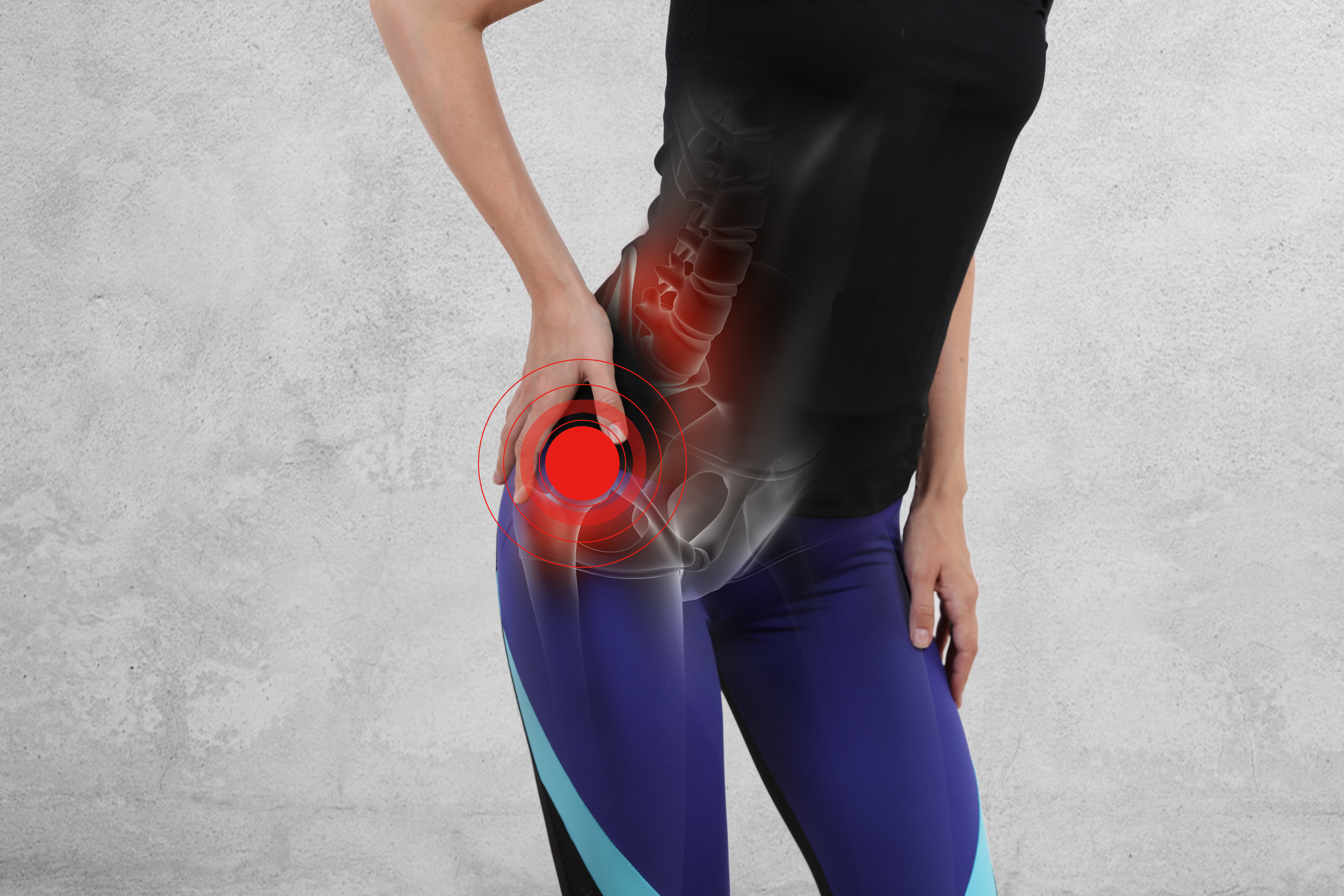The hip joint is a ball and socket joint, due to the ball-like the top of your thighbone fitting into a cup-like area within your pelvis. Each surface is lined with a thin layer of smooth cartilage that is there to cushion and protect the integrity of the bones, as well as to reduce friction forces as the surfaces grinding against each other. The edges of the hip socket are also lined with additional cartilage called labrum that helps deepen the socket portion of the joint and provide additional stability. Femoroacetabular impingement (FAI) occurs when there is tissue interference with the sliding and gliding within the hip joint. When assessing an individual with FAI, they will likely report increasing groin pain when coupling hip flexion past 90 degrees, with internal rotated, and adduction. This type of assessment testing can further be supported with the assistance of diagnostic imaging that includes XRAY, CT or MRI.
Impingement is due to a Cam-type impingement, Pincer type impingement, or a combination of the two. A Cam impingement is where the femoral head (ball) portion of the joint has an undulation or bump on its surface that catches on the outer rim of the acetabulum (socket) and interferes with its free movement within the joint socket. Pincer impingement is when the acetabulum (socket) excessively covers too much surface area of the femoral head (ball) causing the rim of the deepened socket to pinch against the surface of the femoral neck.
Individuals can either be born with either variation and have no obvious pain signals throughout the earlier stages of their lives. Over time these joint anomalies will likely be increasing the friction forces generated within the joint and leading to a greater probability of wearing away the cartilaginous surfaces or outer labrum rim. Depending on the individual, they may suffer a traumatic event that involves injury to their hip, which may accelerate damage sooner and cause some level of functional limitation.
Symptoms of FAI
When these symptoms become apparent they usually result in some variation of anterior or anterolateral hip pain that refers to the groin and occasionally radiates down the anterior thigh. Symptoms such as clicking or catching of the hip may be present. There will typically be restrictions in hip flexion and internal rotation. The pain will be provoked by any prolonged sitting, walking, crossing the legs postures as well as during and after higher impact sport and exercise.
Treatments for FAI
Depending on the severity of FAI, an individual may benefit most non-operatively with the assistance of physiotherapy treatment supplemented with a home-based exercise program. With this method, they will attempt to mobilize the hip joint and stretch any tight structures (joint capsule or muscles) that are contributing to the compression of the femoral head within the acetabulum. It will be their goal to help increased soft tissue flexibility and muscle length within the hip joint in order to assist with better pelvic control and dynamic movement throughout one's pelvic girdle. If this can’t be fixed through conservative management strategies (non-surgical) then they will be referred to an orthopedic surgeon who will make an appropriate determination of which procedure to perform (arthroscopic versus open hip debridement). The level of success will likely be determined by the degree of pre-existing joint damage within the hip.





